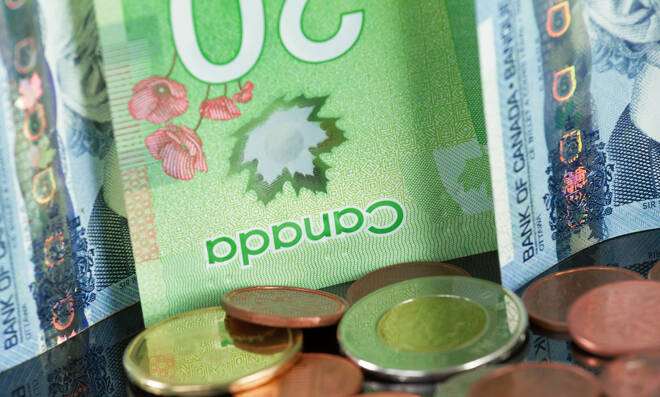Advertisement
Advertisement
USD/CAD: Loonie Hits Over Six-Month Low, Records Biggest Intraday Fall in 4 Weeks
By:
The Canadian dollar dropped to its lowest level in three months on Thursday against its U.S. counterpart as currency traders moved to the safety of the greenback amid rising concerns that global economic activity is slowing and the growing prospect of a reduction in stimulus by the Fed.
In this article:
The Canadian dollar dropped to its lowest level in six months on Thursday against its U.S. counterpart as currency traders moved to the safety of the greenback amid rising concerns that global economic activity is slowing and the growing prospect of a reduction in stimulus by the Fed.
Today, the dollar to loonie conversion rose to 1.2816, up from Wednesday’s close of 1.2655. The Canadian dollar had lost about 1% in July – the second biggest monthly drop since September 2020 and has weakened about 1.2% so far this month.
“We expect the CAD to trade in a broad range against the USD over the next few quarters. There remains a lot of unrealized upside potential in the CAD, according to our fair value model, which continues to suggest an equilibrium estimate of around 1.18 for USDCAD, based on yield differentials and commodity prices,” noted Shaun Osborne, Chief FX Strategist at Scotiabank.
“The CAD has had ample opportunity to strengthen in the past few weeks, with Canadian two-year bond yields maintaining a sizeable 25 bps premium over similar US instruments. But the BoC starting its policy normalization process well ahead of the Fed has not delivered the sort of gains for the CAD that we had anticipated, and we now see USDCAD downside potential limited to the 1.22 area into year-end. We expect USDCAD to strengthen again towards 1.25—near current levels—next year.”
The dollar index, a measurement of the dollar’s value relative to six foreign currencies, was trading 0.36% higher at 93.50, hitting a nine-month high as Fed is on track to taper this year.
According to the Fed minutes released overnight, if the economy continues to improve as expected, the Fed may reduce the bond-buying stimulus this year. That means the Fed will not flood the financial system with cash if they reduce debt purchases.
The greenback was also supported by hawkish remarks from the US Federal Reserve makers in the past which led markets to move forward with expectations of policy tightening. The Federal Reserve may move forward on tapering asset purchases and increase rates sooner if the inflation rate rises. This could effectively push the dollar up in value.
The risk that the world’s dominant reserve currency, the USD, rise over the coming year is high, largely driven by the Fed’s expectation of two rate hikes in 2023. A strengthening dollar and growing risk that the Federal Reserve would tighten its monetary policy earlier than expected would push the USD to CAD pair higher.
Canada is the world’s fourth-largest exporter of oil, which edged lower on a strong dollar. U.S. West Texas Intermediate (WTI) crude futures were trading 3.54% lower at $63.14 a barrel. Lower oil prices lead to lower U.S. dollar earnings for Canadian exporters, resulting in a decreased value of the loonie.
China’s slower economic growth weighed on sentiment. China’s economic indicators caused a decline in global shares, as investors reacted to the spreading Delta COVID-19 variant. As a major exporter of commodities, including oil, Canada’s dollar tends to be sensitive to the outlook for global economic growth.
About the Author
Vivek Kumarauthor
Vivek has over five years of experience in working for the financial market as a strategist and economist.
Did you find this article useful?
Latest news and analysis
Advertisement
